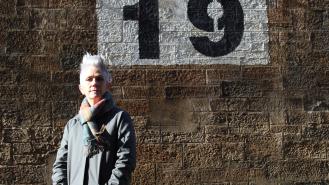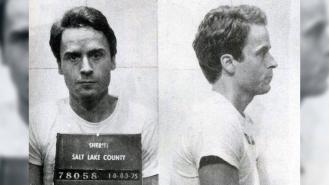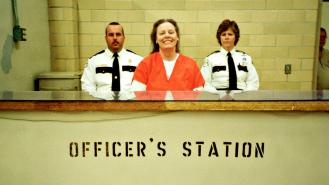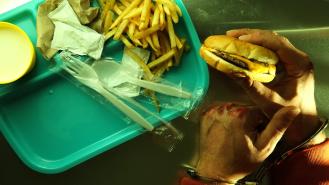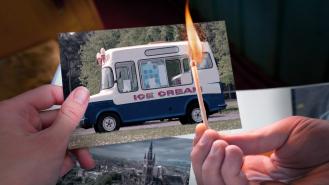
Peter Thomas Anthony Manuel was born in New York in March 1927 to Scottish parents who had moved to the United States in search of a better life. The family struggled to achieve success in the country and found life tough after the Wall Street Crash. They returned home to Scotland in 1932, settling in Lanarkshire. Young Peter had a broad American accent and there are reports that he was bullied by his schoolmates.
By the age of ten he was known to the local police as a petty thief and he spent time in and out of approved schools. His probation officer commented that Manuel had the worst criminal record for a juvenile that he had ever seen. As a teenager, his crimes escalated to include violence and sexual elements.
When he was 15, Manuel broke into a house and attacked the female occupant who was asleep in bed, and beat her over the head with a hammer. Over the next year he carried out a string of sexual attacks for which he was caught and convicted, serving nine years in the local Peterhead prison. He served further prison time for rape before he began his killing spree in 1956.
Opinion was divided about Manuel’s mental state. Some said he displayed many of the classic traits of a psychopath: lacking empathy with his victims, showing no remorse and not accepting that what he had done is wrong. Doctors also described him as having fugue states, memory loss and epilepsy. Those seeking to understand what drove Manuel to kill had to wrestle with some contradictions: he was someone who killed and raped women, yet doted on his own mother; he was cruel to animals but was devoted to the family dog; he couldn't maintain a relationship with a woman but he considered himself as a lothario.
Manuel committed at least eight murders by the time the police arrested him in 1958.
Timeline
1927: Peter Thomas Anthony Manuel is born in New York.
1937: the Manuel family moves back to Scotland.
January 1956: 17-year-old Anne Kneilands is murdered.
17th September 1956: Marion Watt, Vivienne Watt and Margaret Brown are shot dead at their home.
November 1957: Manuel is released from prison after a short term inside for housebreaking.
8th December 1957: Sydney Dunn is killed.
28th December 1957: 17-year-old Isabelle Cooke is killed.
6th January 1958: Peter Smart, his wife Doris and 11-year old son Michael are found shot dead in their home.
14th January 1958: Lanarkshire Police arrest Manuel.
12th May 1958: The trial starts at the High Court in Glasgow.
11th July 1958: Manuel is hung by executioner Harry Allen in Barlinnie jail.
The Trial
31-year-old Peter Manuel was put on trial, charged with eight murders and faced the death penalty. The crowd ,which had queued around the block for a seat in the public gallery, expected a spectacle, and they were not disappointed. Manuel sacked his lawyers and conducted his own defence. He revelled in being the centre of attention and believed himself to be clever enough to make the jury believe in his innocence.
Having confessed to the murders both to the police and in letters, in court the unpredictable Manuel retracted his statements, saying that he only confessed so that the police would leave his family alone. The judge rejected his efforts to have them withdrawn and ruled they could be admitted into evidence. The court heard evidence from the police about the banknotes belonging to Peter Smart which Manuel had spent in a Glasgow bar in the days after the murders took place. The jury also heard about Manuel’s damning confessions and previous criminal convictions.
In his defence, Manuel claimed that he had known the Smart family for years and that Peter Smart had asked him to get him a gun. He said he had found the bodies and thought it looked like a case of murder suicide. And as far as the murder of Isabelle Cooke was concerned, he had claimed to have been at the cinema that night.
The jury were not taken in by Manuel’s defence and after a trial lasting twelve days it took less than two and a half hours for them to return with guilty verdicts on seven murder charges. Disappointingly for Anne Kneilands’ family, the judge ruled that the jury should not find Manuel guilty in her case, due to lack of evidence. Manuel was sentenced to death.
During the days leading up to his execution, the arrogant man who conducted his own defence was replaced by a shambling mess, who hardly spoke to his guards. In one last attempt to escape the hangman’s noose, Manuel tried to convince the authorities that he was not sane, a diagnosis he had previously vehemently denied. But Manuel's mother saw through his pretence. She lost her temper and slapped him across the face during a visit, shouting "You can't fool me!"
On 11th July 1958, Manuel was hanged. His last words are reported as: "Turn up the radio and I’ll go quietly”. He is buried in an unmarked grave within the grounds of Barlinnie prison.
The Arrest
Early in the morning on 14th January 1958, a little over two years since his first known victim was killed, Lanarkshire police finally arrested Peter Manuel. They raided the family home in Birkenshaw, searched for stolen items from the Smart murder scene and arrested Manuel and his father for housebreaking. The aim was to get him off the street and it was while Manuel was under arrest, that the case against him made real progress.
The police knew Manuel well, and were aware of his love of attention, so they left him alone in his cell for nearly 24 hours before interviewing him. This approach had the desired effect and Manuel called from his cell saying he wanted to help police with some "unsolved cases".
He confessed to killing Anne Kneilands, the Watts, Margaret Brown, Isabelle Cooke and the Smart family. It could be that Manuel did that so he would be allowed to see his parents, with whom he had a close relationship. But it could also be argued that psychopathic killers like Manuel need to be at the centre of the story.
The Investigation
The investigation into the horrific murders in Glasgow was challenging for police. Manuel seemed to have no apparent motive, no obvious links with his victims and there were no witnesses or major evidence. The killings went unsolved for years. Manuel’s pattern was to either batter his victims to death or shoot them while they slept. The only connection between the victims is that they were unfortunate enough to be in the wrong place at the wrong time.
Police and prison staff who came into contact with Manuel suspected his involvement in the murders but without any hard evidence there is little they could do about it. It took the deaths of two young girls and two families before the police got their breakthrough. Banknotes stolen from the Smarts' home were linked to Manuel. They were new notes, in a numbered sequence, and it seemed that he used the stolen money to buy drinks in bars around Glasgow. Pub landlords aware of the murder investigation contacted local police.
In addition, the police had letters that Manuel had written to William Watts. Despite trying to pass off responsibility for the murders of the Watts women onto others, Manuel’s letters contained information that only the killer would know.
The Crimes
Between 1956 and 1958 Peter Manuel submitted his victims to an orgy of violence, making him Scotland's most notorious serial killer. The first of Manuel’s victims was 17-year-old Anne Kneilands. On 2nd January 1956, under the cover of darkness, Manuel stalked the teenager across a golf course in East Kilbride, near to where he was working for the gas board.
He raped Anne, and attacked her with an iron bar. Police reported that his victim was the subject of a ferocious sexual attack and had been horribly beaten about the head. Because he was a known sex offender, Lanarkshire police questioned Manuel about Anne’s murder. His father, Samuel, said Peter was with him at the time the crime was committed. Faced with this alibi and no other evidence, the case against Manuel was dropped and he was left free to kill again.
On 17th September 1956, he broke into the home of Marion Watt and her daughter Vivienne, in the middle-class Glasgow district of High Burnside. Margaret’s sister Marion was also staying for a visit. Manuel shot the three women in their beds and sexually assaulted the 16-year-old Vivienne. For a while suspicion fell on Marion’s husband, William, who was away on a fishing trip at the time of the killings. Police arrested William Watts, a successful local businessman, and charged him with the murder of his own family. He spent two months in jail before the case was dropped through lack of evidence.
Meanwhile, Manuel was locked up at Barlinnie Prison after being convicted of breaking into another house. Manuel resumed his killing spree when he was released from prison at the end of November 1957.
His fifth victim was believed to be Northumbrian taxi driver Sydney Dunn who was shot on 8th December 1957. Piecing together information concerning Manuel’s movements after his execution, police determined that he was on a job hunt in the North East at the time of Dunn’s murder. Although this evidence is not conclusive, it links him to the killing.
Isabelle Cooke was the next to die. The teenager was on her way to a dance and had arranged to meet up with her boyfriend, Douglas Brydon, at a bus stop near her Glasgow home. But she never arrived. Police mounted a hunt, but only found pieces of Isabelle’s clothing which suggested she may have been attacked. Isabelle’s body was not discovered until after Manuel was arrested for his other crimes. He confessed to her murder and led police to the remote spot where he had disposed of her body. She had been strangled with her own underwear.
Early on the morning of New Year’s Day 1958, Manuel broke into the home of the Smart family, in Uddingston, a suburb of Glasgow. Mr and Mrs Smart and their 11-year-old son Michael were all asleep in their beds when Manuel shot them in the head. Having committed the murders, Manuel spent some time in the Smart’s home, going back over several days, feeding their cat and eating the family’s food. The murders of the Smart family proved the beginning of the end for Manuel.
